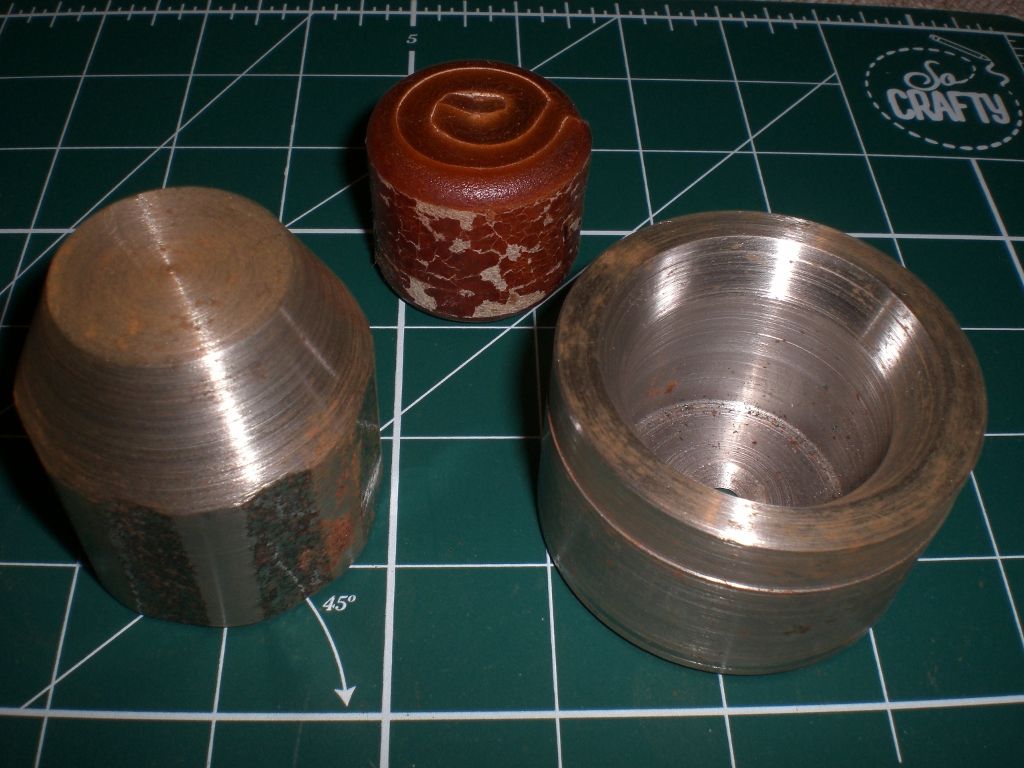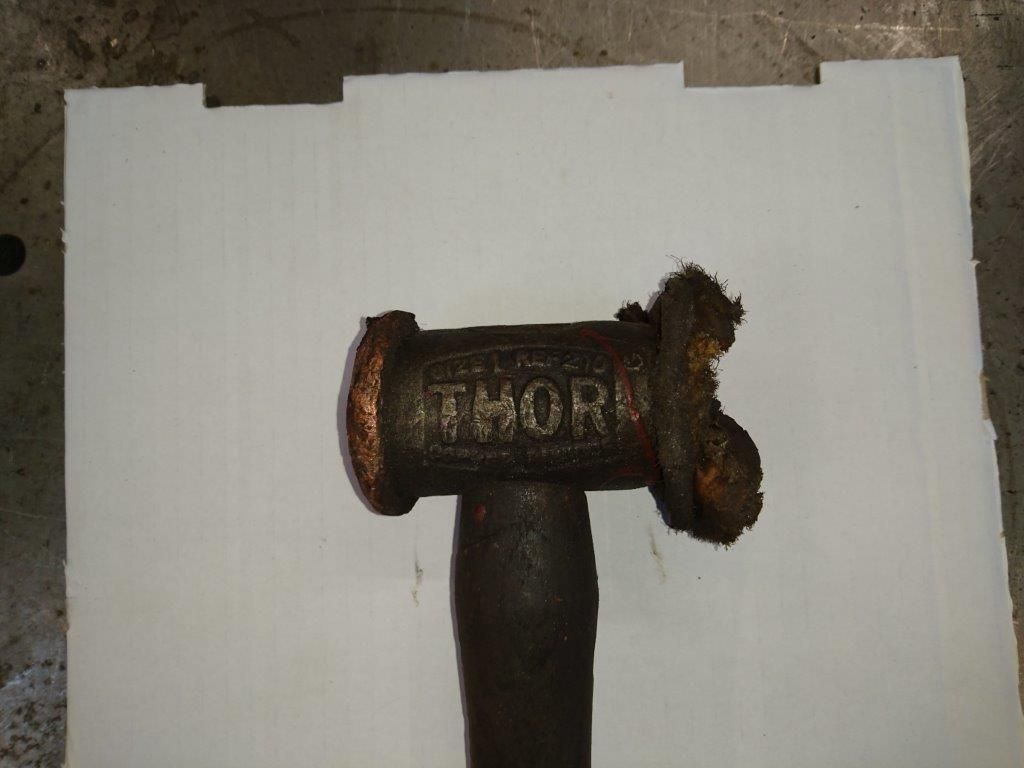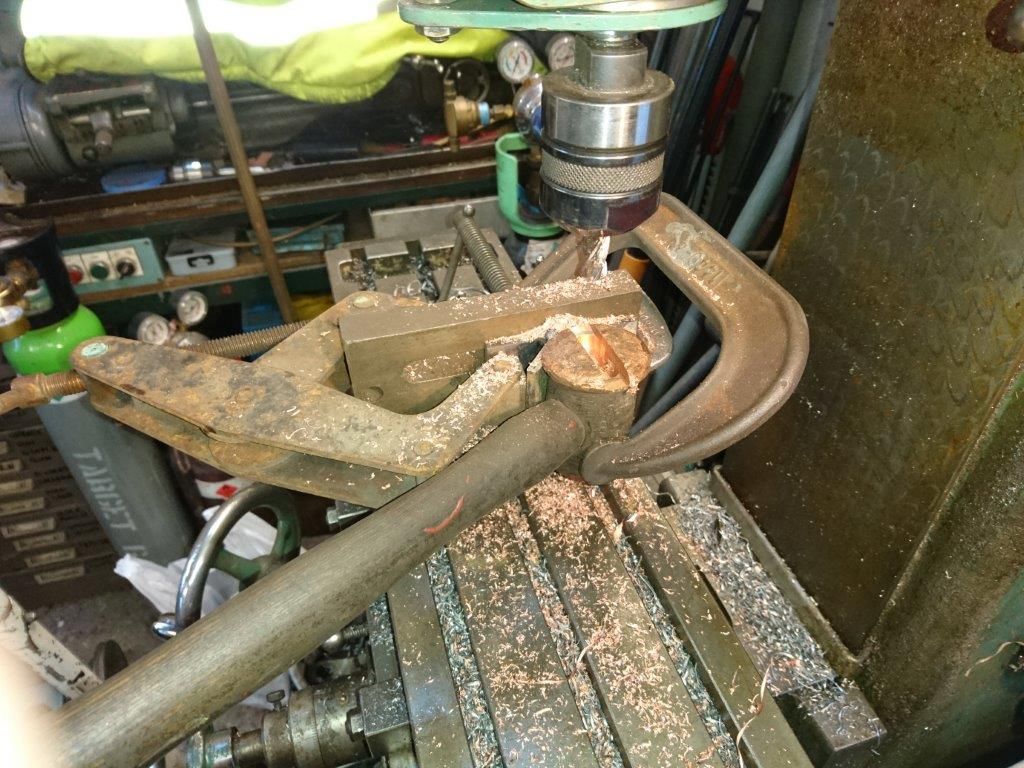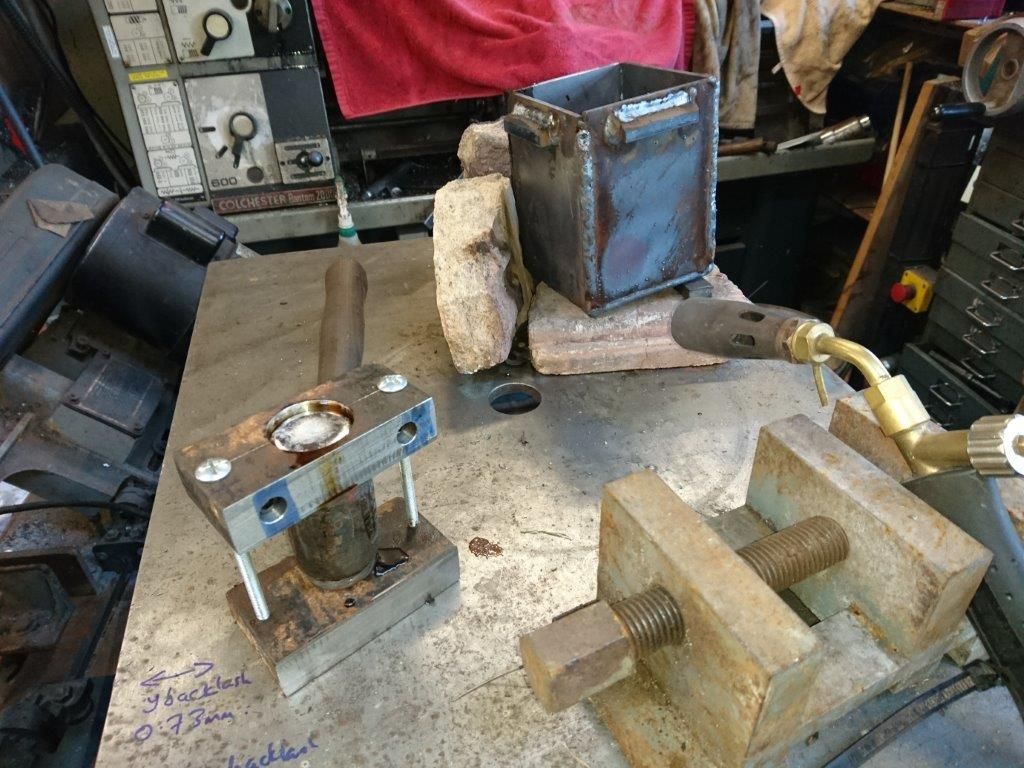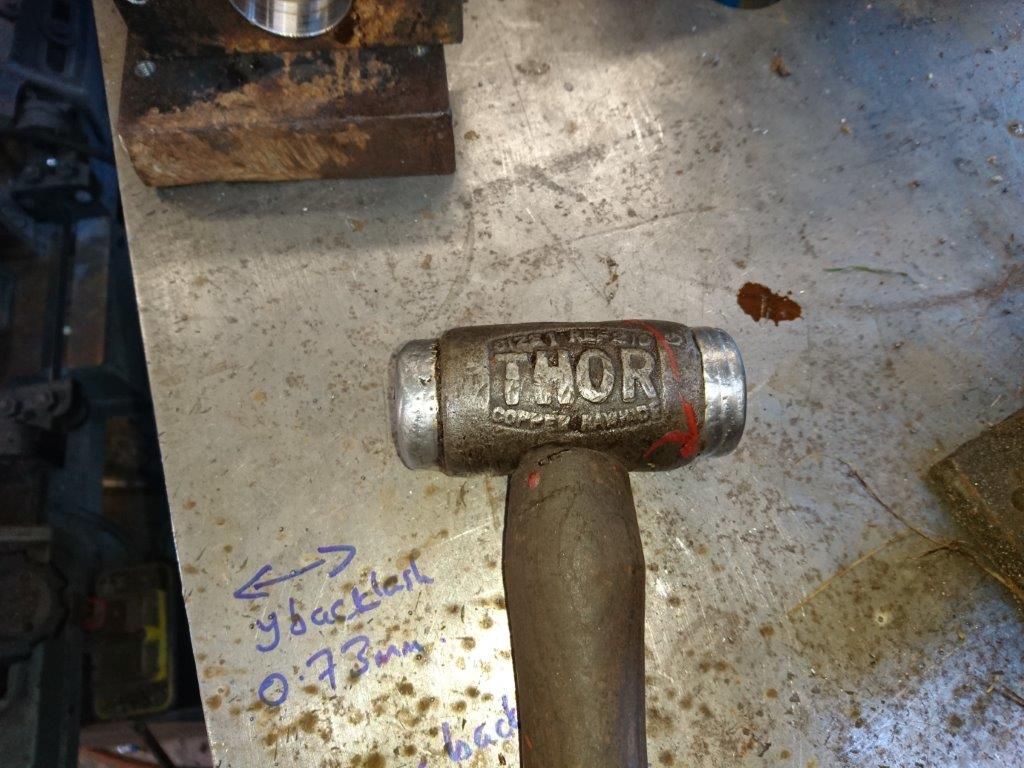From the net on another forum:
The e-mail from Thor is below but I think I may just buy a new hammer!
To replace the faces on these hammers you really need time, tool room facilities, patience and determination.
To put things in perspective, these hammers were designed around 1930, when labour was cheap and changing faces was often an apprentices job in a large tool room where all the necessary facilities were available.
I have attached a scan of an old leaflet which tells how to replace the faces on the copper/rawhide hammer Size 2, but the principles are the same for all sizes.
The text from the leaflet is below:
"You ask the best method of removing and replacing faces. This is not easy but may I advise using as an example a No. 2 Copper Hammer (04-312) with face diameter of 1 ½".
During the manufacturing process faces are placed in the socket of the malleable iron casting which is oversize by approximately .025" to enable the face to sit firmly. With faces fitted the casting is then put under a 50 ton hydraulic press which swages the malleable iron around the faces, thus ensuring that they are securely fitted. In this operation the socket opening is closed in, and after swaging could be 1 ½", -×005" or -×007".
You may appreciate therefore that it is not easy to replace worn faces and I enclose a simple leaflet giving details of general fitting procedures. Whilst many customers do replace rawhide faces, copper can be particularly difficult for there are grooves in the copper socket into which the copper spreads.
The use of an opening and closing tool is ESSENTIAL to change the copper face and I can send you a drawing of the tool or make one for you. A different tool is needed for each size of hammer and for example the number 2 size is £45.00, although anyone with tool room facilities can easily make one themselves.
Our copper is 99% pure and, being soft, will after considerable use, mushroom over the hammer head and in this state often lasts almost indefinitely.
Many customers find it more economical to use the copper end to destruction and then replace the complete hammer. Some large users use an air/pneumatic chisel to force out the copper face but this can only be done before there is any head distortion.
The time taken to replace copper faces is generally not cost effective.
I hope this brief summary is of assistance."
If you do go the opening and closing tool route, there is a possibility that the casting will crack in the process and only the minimum opening up and closing in of the casting should be applied. This particularly applies to hammers made after about 1990 as we moved from traditional blackheart iron to spherical graphite, which is harder, due to the high environmental cost of annealing the blackheart.
Regards and Best of Luck
Derek Mathers
Thor Hammer Company Limited
Highlands Road
Shirley
Solihull
West Midlands B90 4NJ
ENGLAND
[/i]Back to top
Kenneth Deighton.


